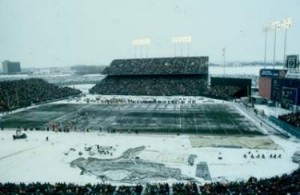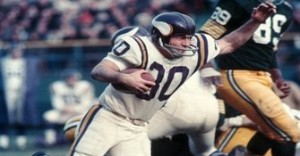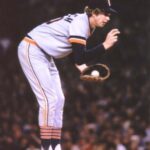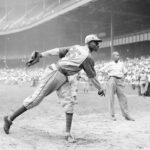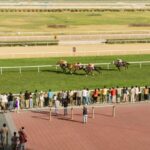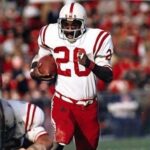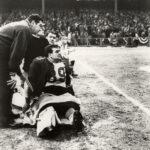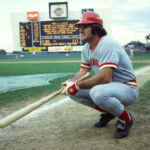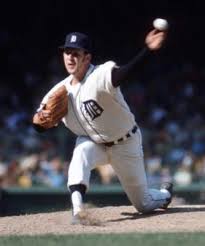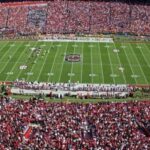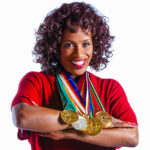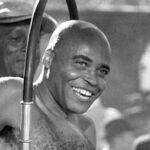Vikings Return To Their Roots With Outdoor Football Game
The final home game of the 50th season for the Minnesota Vikings will be a cold “blast from the past” as the recent deflation of the roof at the Metrodome means the Vikings and Chicago Bears will be clashing Monday night outdoors at the University of Minnesota’s TCF Stadium.
From their creation in 1961 through the 1981 season the Vikings played all their home games outdoors at Metropolitan Stadium. During that time, there were a plethora of frozen memories as the Vikings enjoyed significant success playing on their frozen tundra.
Overall, the Vikings were 91-56-4 at Metropolitan Stadium during the regular season and 7-3 on the frozen turf during the post season.
When the Vikings played their first game at Metropolitan Stadium on September 21, 1961 they showed signs of what was to come as they surprised the veteran Chicago Bears 37-13 behind the four-touchdown passes thrown by rookie quarterback Fran Tarkenton.
The Vikings were 15-26-1 during their first six seasons playing at Metropolitan Stadium under head coach Norm Van Brocklin and overall posted just one winning season. However, once Bud Grant arrived in 1967, the team soon started to develop into one of the elite teams in the league and Metropolitan Stadium was an important component of that success.
In 1969 the Vikings were a perfect 7-0 at home during the regular season and then won consecutive cold weather playoff games over the Los Angeles Rams (23-20; 10 degrees, -1 wind chill) and Cleveland Browns (27-7; 8 degrees, -6 wind chill) to reach the Super Bowl for the first time.
Which is More Fun to Watch?
- Outdoor football where the weather can impact the game (92%, 34 Votes)
- Indoor football where the temperature is controlled and doesn't impact the game (8%, 3 Votes)
Total Voters: 37
The following season they again were undefeated at home during the regular season, but were unable to take advantage of the cold weather (10 degrees, -5 wind chill) during a 17-14 playoff loss to the San Francisco 49ers.
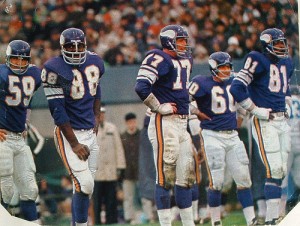
The outdoor stadium and often frozen field made the Purple People Eaters of the Viking defense all the tougher to deal with.
During the 15 seasons that Grant’s Vikings played home games at Metropolitan Stadium the squad was 76-30-3 in the stadium during the regular season and 7-3 during the playoffs.
In 1974 and 1976 the Vikings used the home field advantage in the NFC Championship Game to help claim trips to the Super Bowl. During both of those seasons the victim was the Los Angeles Rams, who were accustomed to warmer weather for their home games.
Though the weather for both games might have been described as balmy for Minnesota during that time of year (28 degrees for the 1974 Championship Game and 19 degrees in 1976), the weather still proved to be a factor as the Rams lost 14-10 and 24-13 respectively.
The images of players slipping on the frozen field and cold breath streaming out from frigid facemasks was an indelible part of the mystic of the Vikings teams of that era. Through it all, players like Bill Brown, Alan Page, Jim Marshall and others seemed to bask in the cold and dare their foes to succumb to weather. They rarely wore long sleeves and head coach Bud Grant would allow heaters on the visitor’s sidelines, but not on the home side in a statement to his players and the opponents that they weren’t affected by the weather.
Perhaps the final great moment for the Vikings at Metropolitan Stadium occurred on December 14, 1980 when Minnesota rallied from a 23-9 fourth quarter deficit to defeat the Cleveland Browns in a game played in 23 degree weather.
Trailing by a single point in the final seconds, the Vikings drove the length of the field and scored on a 46-yard “hail mary” pass from Tommy Kramer to Ahmad Rashad that was tipped by the Browns and landed in Rashad’s hands. The 28-23 victory lifted the Vikings to their 11th playoff appearance in 13 years.
The next season was the final one for the team playing outdoors and they went 5-3 at home. However, they lost their final five games of the campaign, including home losses to Green Bay and Kansas City to close out their 21 seasons playing in the often frigid outdoor conditions in Minnesota.
Since 1982, the Vikings have called the climate controlled Metrodome their home. Interestingly, they have played 10 playoff games at home during that stretch and have a 6-4 record.
Metropolitan Stadium was demolished in 1985 and now is the site of the Mall of America.
The Minnesota Twins moved back outdoors earlier this year after having shared the indoor stadium with the Vikings since 1982. It will be interesting to see how the return to the outdoors impacts the Vikings as well as their opponent the Chicago Bears.
Though the Bears play their home games outside at Soldier Field, they looked very uncomfortable in the weather last weekend when they were demolished by the New England Patriots 36-7 in the Chicago cold and snow.
With the Vikings starting Joe Webb, an unproven rookie from Alabama-Birmingham, at quarterback, it could be a tough night for the Vikings regardless of the weather.
However, with this marking the final home game of the 50th season for the Vikings it will be great nostalgia for the Vikings to again play outdoors at home in December.
Who knows, if they win it might be just the convincing needed for the Vikings to return full time to outdoor football.
Below are a couple remembrances from the outdoor glory days of the Minnesota Vikings:
